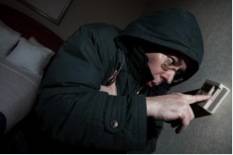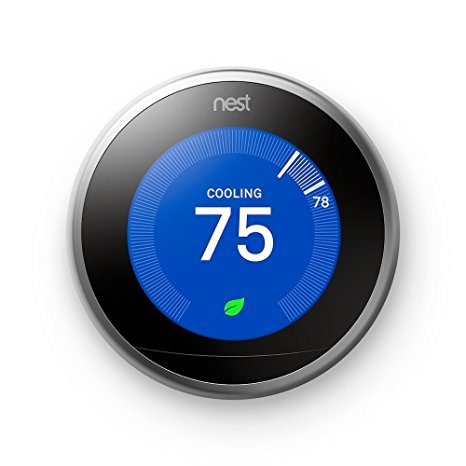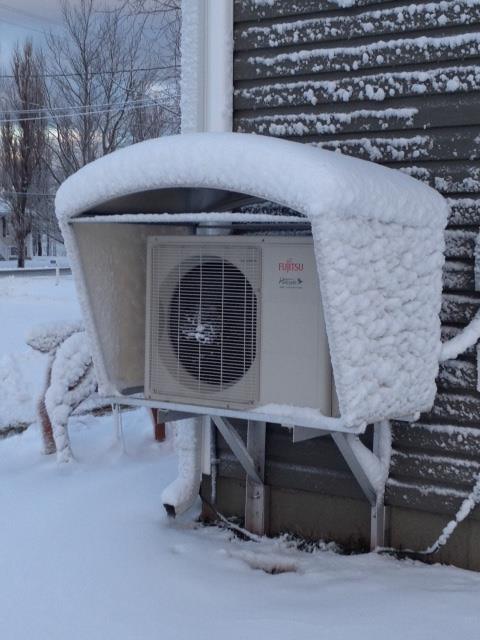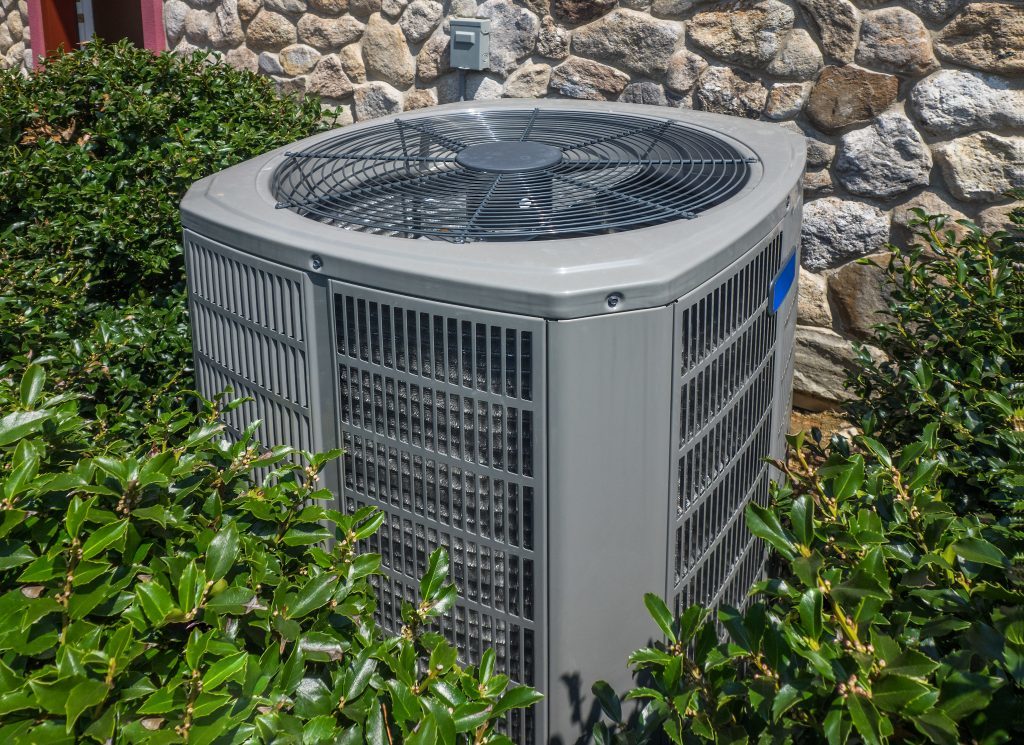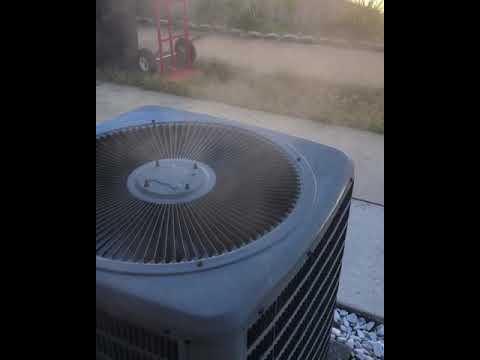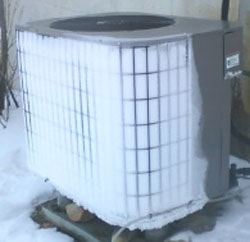|
#1 It's normal if the air blowing from your heat pump feels cool. Heat pumps deliver a lower supply air temperature than a furnace, but over a longer period of time to provide a constant heat. Because the air coming out of the air handler may be less than body temperature, it may feel cool to you. This is normal, and your heat pump is likely operating normally. Also, heating up one or more rooms will take longer than a traditional furnace, so it may seem like your heat pump is constantly on. This too is normal.
#2 You may have to change the way you operate your thermostat. Because of the reasons mentioned above, just set your thermostat at one temperature. Your room (s) will eventually warm up. Constantly adjusting your thermostat can interfere with the efficient operation of your heat pump. If you program your thermostat as a setback thermostat to reduce heat when you're not at home and turn it back on when you return, remember that a heat pump will take longer to heat your home. So don't setback your thermostat more than 5 degrees from your target temperature, and have it turn back on 1-2 hours before you return home. During heating season, don't setback your thermostat below 65 degrees. During cooling season, don't set your thermostat below 70 degrees, since this can cause the indoor coil to freeze can cause condensation in the house. #3 Make it a habit to regularly inspect the outdoor unit of the heat pump and remove ice or snow build-up on or around the unit. Make sure the air ducts are always kept clear of snow or vegetation. If the unit is covered in snow or ice, it must be removed immediately. You can pour water over the unit to melt snow and ice. You can turn your unit to defrost mode (i.e. air conditioning mode) which will send warm air out the back of the unit to also help melt snow or ice. Do not use sharp objects to pick or knock ice off the coils of the outdoor unit as this could cause severe damage or even personal injury. Also don't let the unit sit under a leaking gutter in winter. This again will cause a build up of ice on your unit, causing it to freeze up. Make sure your outdoor unit is installed at least half a foot above ground level to keep the coils free of snow and to allow for proper drainage. Some units are installed on a concrete tab, others directly to the wall of a house. #4 Outdoor water leaking from the unit is normal. Moisture from the air in your house is condensed on the outside surface of the coils where it gathers and runs off. This is normal. The heat pump dehumidifies you home and produces a dry heat. If you find this uncomfortable, you may consider buying a humidifier. #5 The heat pump seems to turn off in the middle of winter. This is normal and involves the defrost cycle of the heat pump. As mentioned, water builds up on the outside coils of a heat pump and when the temperature is below freezing, the coils will ice up. To prevent the heat pump from failing, it will periodically reverse itself, going from heating to cooling. As explained in other tabs on this website, a cooling cycle involves taking warm air from inside the home and ejecting it outside. This warm air will defrost the outside unit's coils. If you see steam coming from the outdoor unit, this is normal for the defrost cycle. When defrosting is finished, heat will turn back on. #6 Ongoing maintenance: Check air filters monthly, clean/replace as needed. Keep the outdoor unit clear of shrubs at least 18 inches from all sides of the outdoor unit including the top and bottom. Likewise keep the unit clear of snow, ice, or debris. Keep the outdoor coils clean. If they get dirty, you can use a heavy-duty degreaser and hose them down. Be sure to turn off the unit first whenever opening the outdoor unit. Flush the indoor condensate pan and drain in the Spring, before transitioning the heat pump to air conditioning use. This is extremely important if the unit is in a finished living area to avoid spills. Some fan motors need to be oiled annually, which should be done by a trained service technician. Have your heat pump inspected by a service technician once a year. #7 My heat pump air conditioning is much too cool. What happens is that to provide sufficient heat in winter, you need to have a good sized heat pump, but that typically makes it oversized for cooling purposes in the summer. Over-sized air conditioning removes humidity from the space too quickly, which can result in short-cycling the compressor, making it uncomfortably cold in the living space. #8 My contractor says I don't have enough electricity to install a heat pump. As with the installation of any major appliance, a heat pump needs free space in your electrical panel. If you have a 100 amp panel that has no free space for additional appliances, and the heat pump needs 80 amps, guess what? You have to upgrade the whole house's electrical system to accommodate the heat pump. This can be expensive and will require an electrician to do the work. And a big home may require more than one outside unit, which puts even more strain on the electrical requirements. As an example, a York heat pump needs 110 amps on two dedicated circuits: the air handler with electric strip heater needs a 208/240 volt/80 amp dedicated circuit, and the condenser/compressor needs a 208/240 volt/30 amp dedicate circuit. #9 Troubleshooting: Your unit constantly turns on and off. This is called short-cycling and can be due to the air filter clogging, a thermostat error, leaky refrigerant, or an oversized unit. See here for details. If your heat pump isn't working at all, first make sure it's turned on! Then check for electrical shorts - your fuse box, or the electrical disconnect switch usually located near the outside unit; or make sure your thermostat is set and working properly. You could be having problems with the compressor which could be seized or burned out. Worn compressor bearings will requiring replacing the compressor. A unit that makes a loud humming noise may be having a problem with the compressor overload relay. A common heat pump issue is a coil that ices up (like in picture to the left). This could be due to low refrigerant, or a refrigerant leak, in which case the coil will need to be replaced or repaired along with refilling the refrigerant. Frost or ice buildup on the coils can also be caused by dirty filters that can impede air flow, damaged blower fans, a faulty control relay, broken defroster timer, or dirty coils. Noisy heat pumps are a common complaint. Some noise is normal, and as mentioned on the "Basics" tab, some run normally at over 60 decibels. But some noise can be do to operational problems. A grinding noise can be a sign of a problem with a fan motor, possibly worn bearings, which is a serious problem. Rattling noises can be due to loose cabinet screws or duct-work. And the worst possible time for any of these components to fail is in the winter, especially if you don't have a backup heat system. It could take weeks for the necessary replacement parts to arrive, and to schedule the work with the contractor. #10 Replacement: The average life of a heat pump is 10 - 15 years. In fact most warranties are good for less than 10 years, especially for the compressor, and such warranties don't include labor costs. The rule of thumb for any HVAC system is the 50% rule: When the cost of repairs approaches 50% of the value of your heating or cooling system, it’s generally time to replace the system. Thus, if the unit is approaching 10 years in age and major components are giving you problem, like the compressor, reversing valves, accumulator or outdoor coil, it may make more sense to replace rather than fix. Replacing a condenser, for example, is somewhat less expensive than replacing the entire unit, but a new unit may give you better efficiency and operating cost in compensation. Other useful websites (some of these sites are HVAC contractors, which contain useful information, though we don't endorse any seller of heat pumps or HVAC equipment): Why my heat pump blows cold air Heat Pumps 101 Pros/Cons Reviews Buying a Heat Pump |
